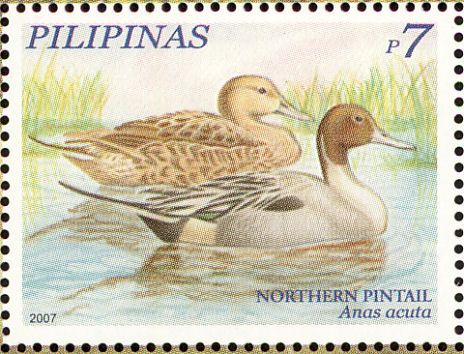The Northern Pintail (Anas acuta) is a dabbling duck. Diet is mostly plant material, including seeds of grasses, sedges, pondweeds, and waste grain in fields. In summer its diet includes more animal matter, such as insects, crustaceans, mollusks, and sometimes tadpoles and small fish. It forages in shallow water by upending or by submerging its head and neck while swimming, looking for food in the underwater mud. It also forages by walking on land.The North American Breeding Bird Survey noted a cumulative decline of the Northern Pintail population of 72% between 1966 and 2012. The 2014 State of the Birds report listed this species as a common bird in steep decline.
The Northern Pintail is vulnerable to nest losses from farming operations because it uses cropland as nesting habitat. The species is also vulnerable to nest predation by mammals such as coyotes, red foxes, mink, raccoons, badgers, and ground squirrels. Nest parasitism is also a problem for this species. The introduced Ring-necked Pheasant along with other native duck species such as Redhead, Ruddy Duck, Common Goldeneye, and Blue-winged Teal will lay eggs in a Northern Pintail nest. When this happens, the hatchability of the Northern Pintail eggs can be reduced by a third.
Source: My Edmonds News, 5 Jan 2018
http://myedmondsnews.com/2018/01/bird-lore-northern-pintail/

- Login om te reageren
